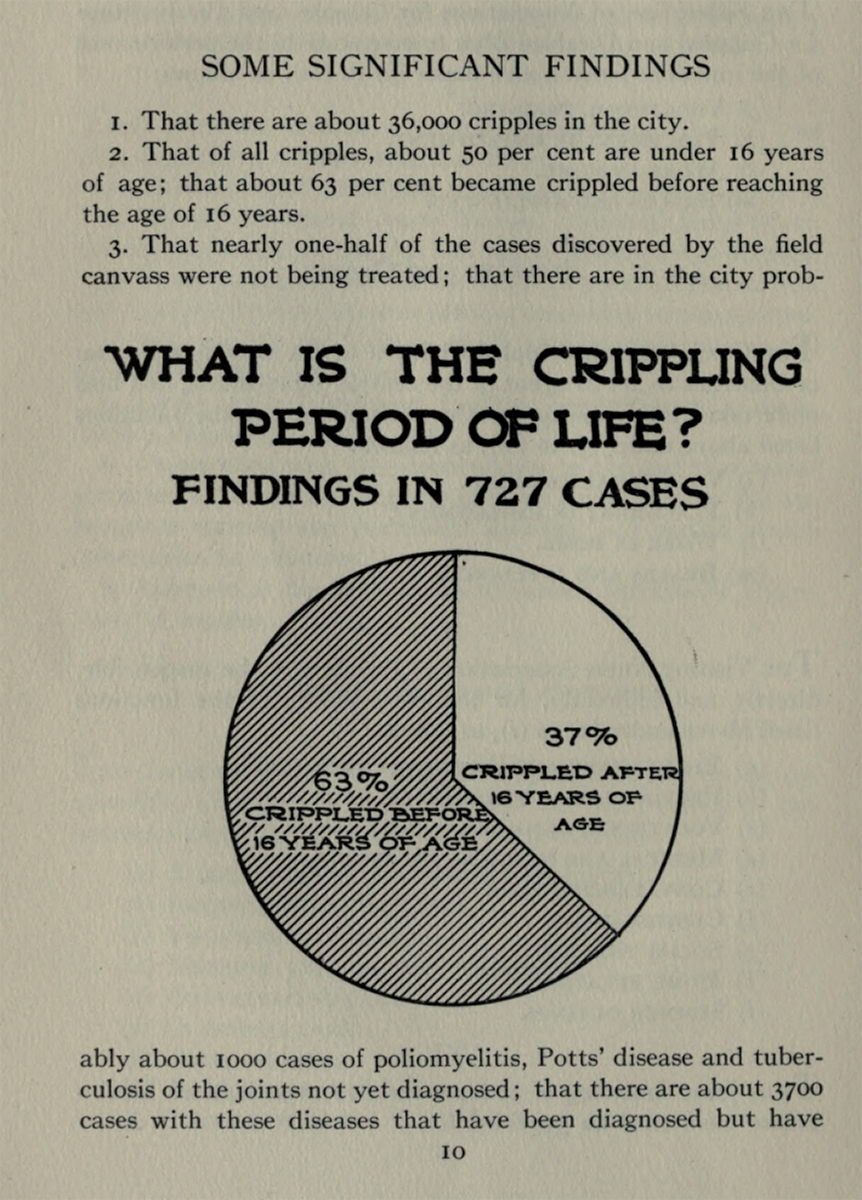You are here:
Survey of Cripples in New York City, excerpt

Date: 1920
Caption: A coalition of 41 organizations, associations, and hospitals organized a survey of polio survivors after an outbreak in New York City in 1916. They developed recommendations for education, care, and assistive devices like braces and crutches.
Polio was a mass-disabling event that spanned nearly 50 years between the time the virus appeared in 1908 to the discovery of a vaccine in 1955. Most people who caught polio became sick, but many people died and many others became partially or totally paralyzed. Children were especially likely to catch the virus because their immune systems were less developed. In New York City, a major outbreak took place in 1916, killing more than 2,000 people and disabling thousands more. Many children who survived polio were cared for at home or lived at hospitals.
Several years after the 1916 outbreak, representatives from charitable organizations and hospitals held a conference initiated by the New York Committee for After Care of Infantile Paralysis Cases. They decided to conduct a broad-reaching survey, going door-to-door in some neighborhoods to estimate how many “cripples” lived in the city and to investigate how they became disabled. They also came up with recommendations for how to care for and educate Disabled children and older polio survivors. The writer of the report felt that education was “more important, if possible, for cripples than for a normal child.” They recommended that the Board of Education be responsible for instructing physically disabled children, including in homes, hospitals, and care facilities. The report explained that home instruction worked “reasonably well” but that education in hospitals and care facilities was “less satisfactory.”
Categories: community activism
Tags: physical disabilities, Disabled people, architectural barriers
This item is part of "Fighting to Fit In: Physical Access" in "Seeking Equity for Disabled Students"
Item Details
Date: 1920
Creator: Henry C. Wright
Copyright: Public domain
How to cite: “Survey of Cripples in New York City, excerpt,” Henry C. Wright, in New York City Civil Rights History Project, Accessed: [Month Day, Year], https://nyccivilrightshistory.org/gallery/survey-of-cripples.
Questions to Consider
- How many of the city’s physically disabled residents were children in 1920?
- Based on the recommendations of the author of this report, what kind of education do you think Disabled children might have received at this time?
- Why does the author think education was so important for physically disabled children?
- Sometimes physical disabilities are the result of ongoing environmental or social dangers. What causes physical disabilities in your communities today? What kinds of educational support do Disabled people receive?
References
How to Print this Page
- Press Ctrl + P or Cmd + P to open the print dialogue window.
- Under settings, choose "display headers and footers" if you want to print page numbers and the web address.
- Embedded PDF files will not print as part of the page. For best printing results, download the PDF and print from Adobe Reader or Preview.
